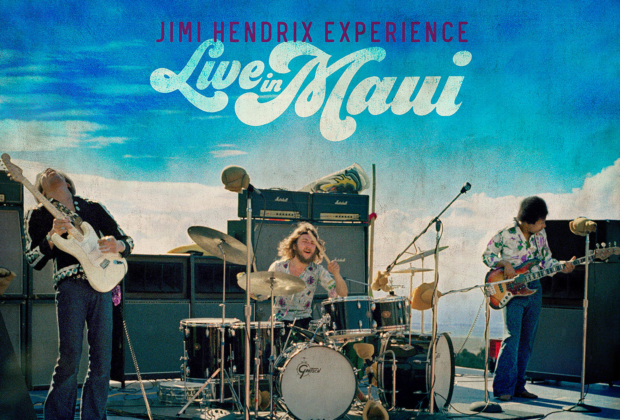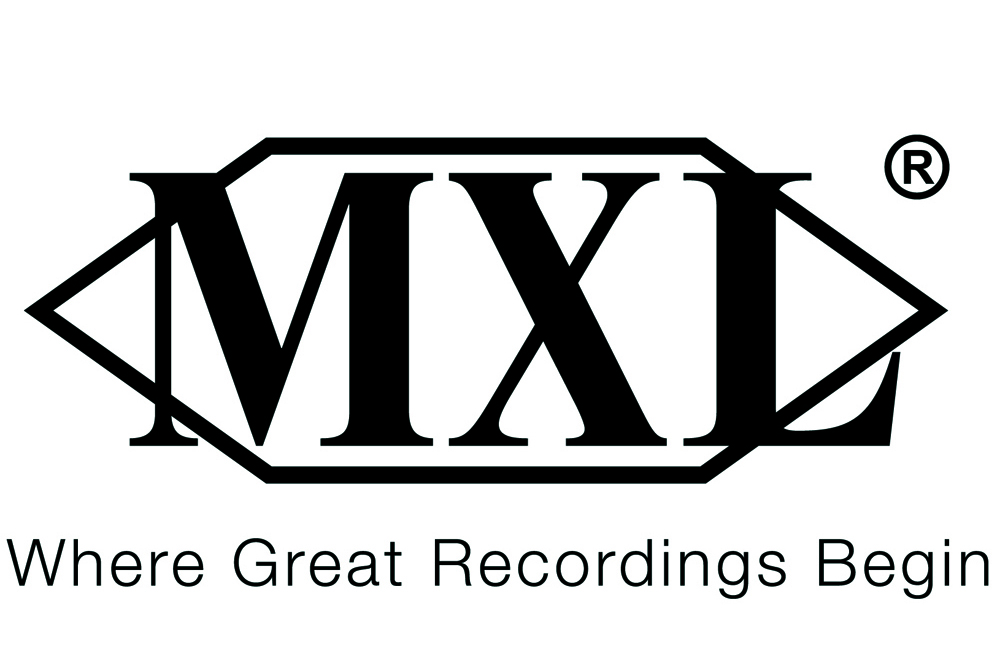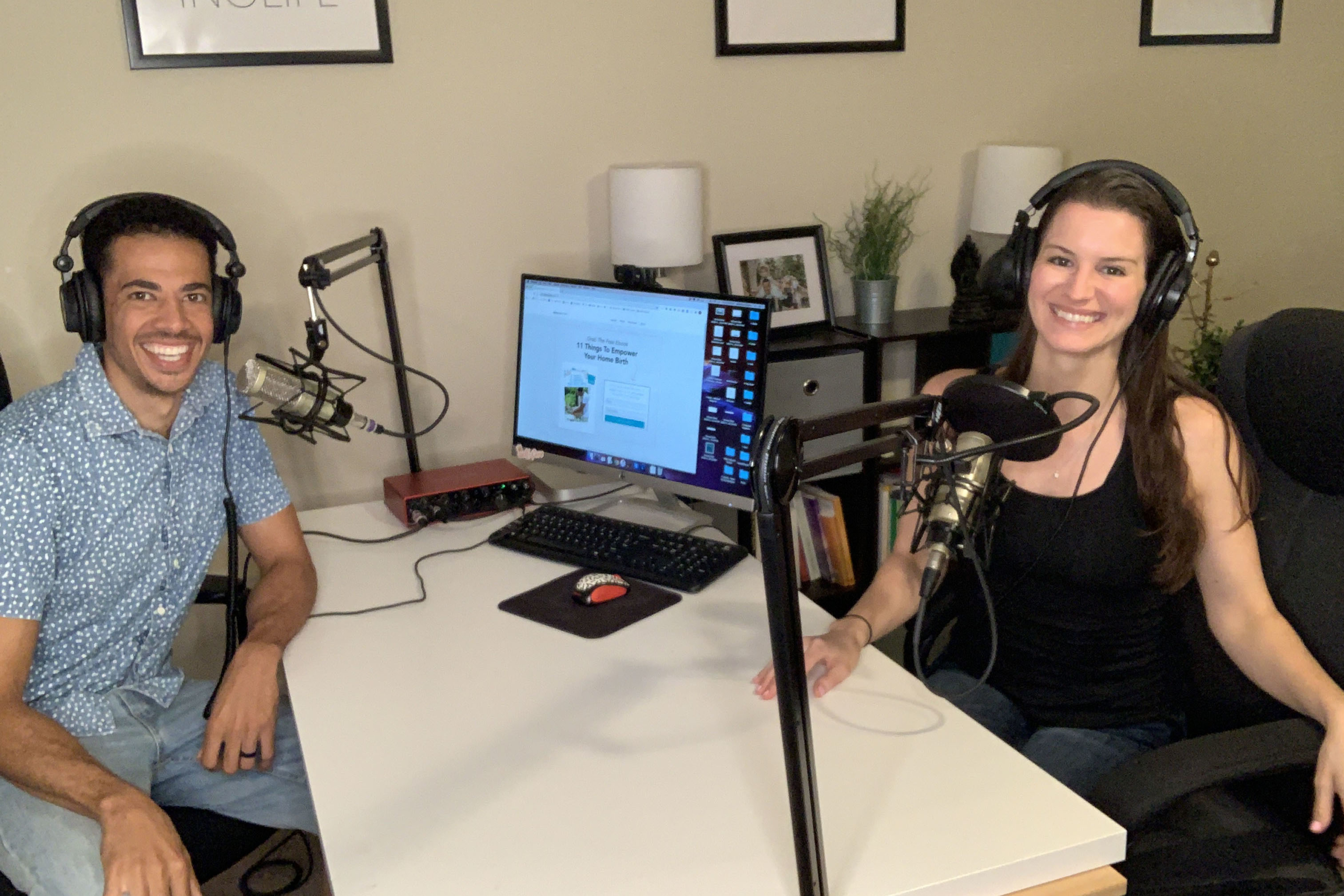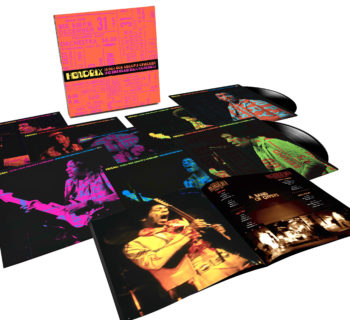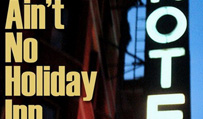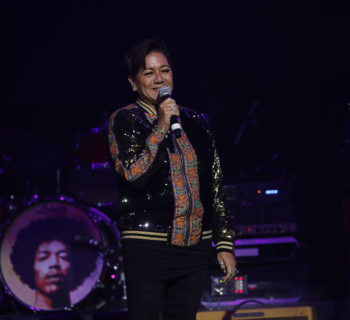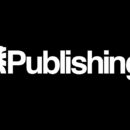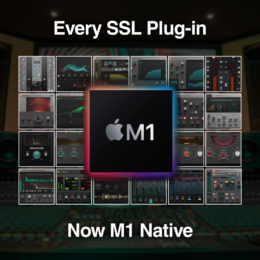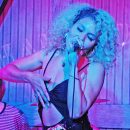Experience Hendrix L.L.C. in partnership with Legacy Recordings, a division of Sony Music Entertainment, are releasing the brand new feature length documentary Music, Money, Madness . . . Jimi Hendrix In Maui as well as the accompanying album Live In Maui on November 20.
A press release describes the retail product, “The film chronicles the Jimi Hendrix Experience’s storied visit to Maui and how they became ensnared with the ill-fated Rainbow Bridge movie produced by their controversial manager Michael Jeffery. The Blu-ray will include the full documentary as well as bonus features featuring all of the existing 16mm color film shot of the two performances that afternoon mixed in both stereo and 5.1 surround sound. Included in the package will be Live In Maui – both of the aforementioned sets spread across 2 CDs or 3 vinyl LPs, newly restored and mixed by longtime Jimi Hendrix engineer Eddie Kramer, and mastered by Bernie Grundman.”
View trailer for Music, Money, Madness . . . Jimi Hendrix In Maui: https://jimihendrix.lnk.to/Mauidoctrailer
By the middle of 1970, Jimi Hendrix was working on a follow up album to Electric Ladyland with his bandmates Mitch Mitchell (drums) and Billy Cox (bass), headlining festivals and arenas across the U.S. and building Electric Lady Studios in Manhattan’s Greenwich Village. Completing this state-of-the-art recording facility was proving to be a costly endeavor, so his manager Michael Jeffery procured a $500,000 advance from Warner Bros. to fund the remaining construction required to complete the studio. At those same meetings, Jeffery convinced Warner Bros. executives to finance a film called Rainbow Bridge that was to be shot in Maui, in exchange for rights to its soundtrack album consisting of new Jimi Hendrix studio recordings.
Inspired by Easy Rider and directed by Warhol acolyte Chuck Wein, Jeffery’s film centered around the idea of a “rainbow bridge” between the unenlightened and enlightened worlds. It was envisioned to feature everything from surfing and yoga to meditation and Tai-Chi and filmed without the aid of a script or professional actors. It proved to be a rambling assemblage of hippie excess and Jeffery grew concerned that his investment was being squandered. The Experience were already booked to perform a concert in Honolulu at the H.I.C. Arena on August 1, 1970. Chuck Wein, desperate to feature Hendrix in some capacity within the film, devised a plan to film a free ‘color/sound vibratory experiment’ on the lower slope of the dormant Haleakala volcano. Word of mouth about a free Jimi Hendrix concert led a few hundred curious Maui locals to the Baldwin cattle ranch in Olinda where a makeshift stage was constructed and the audience was arranged by their astrological signs. The performance was a success – the trio was at the height of its powers and played two sets flawlessly against a stunning natural backdrop.
Earlier this decade I conducted an interview with photographer Robert Knight who attended concerts by the Jimi Hendrix Experience in Hawaii.
“The Otani house Diamond Head, Honolulu was where promoter Tom Moffatt would put high-level bands right at the foot of Diamond Head Road. But did not shoot Jimi there as he was always in a bathing suit and not the vibe he wanted photographed around his concert on May 31st at the Waikiki Shell.
“In late May of 1969 in Hawaii, Jimi and I did talk about Electric Church idea he had. He saw concerts like a sort of worship service and kind of projected that idea with people coming in to worship as he felt he connected to the Universe as he played.
"Hendrix was great and Hawaii was the place he could hang out and not be bothered. He came many times and spent a long period on Maui. When he was at the Otani House I would go down and hang out with the band and talk about very strange things so of which I only now really understand. When I first met Janie Hendrix she asked me what her brother was like as she was a very young girl back when he was alive. We talked a lot about UFO’s which Hawaii had a lot of!”
In the aftermath of his performance on Maui, Hendrix would return to New York and his work at Electric Lady Studios. He had no further involvement in Rainbow Bridge. He left for Europe at the end of August to headline the massive Isle Of Wight festival and begin a European tour. Tragically, he would die in London on September 18, 1970.
The Cry Of Love, the first album of posthumous Jimi Hendrix recordings, was issued in 1971 to wide commercial and critical acclaim. Jeffery readied Rainbow Bridge and its accompanying soundtrack to be the next release. Despite its Hendrix association, the film was a commercial flop. Rainbow Bridge confused moviegoers, many of whom were under the impression they were going to see a concert film. A scant 17 minutes of haphazardly edited Hendrix concert footage was used in the final cut, and it proved to be the film’s saving grace. Due to technical problems inherent in the original recording of the Maui performances, Mitch Mitchell had to overdub his drum tracks at Electric Lady Studios in 1971 just so those performances could be featured.
Eddie Kramer recalls, "Mitch did a tremendous amount of work on the overdubs. If he didn’t get it in one take, he certainly did in the second one and I was so blown away by his ability to duplicate the parts he had already played! He was determined to fix what suffered on the recordings due to the 50 mile an hour winds because they were playing on the side of a bloody volcano! After Jimi died it took a while before I was able to go back to the closet with all the tapes. Mitch was a trooper with a can do British attitude. It’s all very well to overdub drums, but to do it so you can’t tell, that’s the magic. He knew the material extremely well and it’s a tribute to his sensitivity as a great musician and an equal and willing partner of Jimi’s.”
The posthumously released Rainbow Bridge soundtrack album, prepared by Mitch Mitchell, Eddie Kramer and John Jansen, was first rate and featured classics such as “Dolly Dagger” and “Hey Baby (New Rising Sun).” The album, however, did not include audio from the Maui concert, which may have also added to consumer confusion.
Directed by John McDermott and produced by Janie Hendrix, George Scott and McDermott, Music, Money, Madness . . . Jimi Hendrix In Maui incorporates never before released original footage and new interviews with firsthand participants and key players such as Billy Cox, Eddie Kramer, Warner Bros. executives and several Rainbow Bridge cast members, as well as its director Chuck Wein. Their fascinating account tells the definitive story about one of the most controversial independent films ever made.
The documentary sets the proverbial stage for Live In Maui – the two full Jimi Hendrix Experience sets, including breathtaking renditions of crowd favorites like “Foxey Lady,” “Purple Haze” and Voodoo Child (Slight Return),” as well as then-unreleased songs like “Dolly Dagger” and “Freedom” that showcased the new direction Hendrix was moving toward.
“Jimi loved adventure and there was certainly no shortage of it during his time in Hawaii, a place he also loved,” said Janie Hendrix. “The back story of Rainbow Bridge and these recordings paint a picture of Jimi’s uncanny ability to turn the bizarre into something amazing! We’re excited about this release because it gives the world a closer look at Jimi’s genius.”
A few years ago I interviewed Billy Cox and I asked him about Hendrix’s legacy.
“Jimi knew he has something to offer to this world. He was a cosmic messenger, and his music today is just timeless, because right now I see all these young kids picking up guitars. It transcends cultural boundries! Anywhere you go around the world, there are young kids with guitars and playing them. Like Beethoven, Mozart, and Handl, Jimi left one hell of a legacy.
“Jimi was bombarded a lot of time with bull crap by attorneys and management that was unnecessary for a man who was supposed to be about the music. Why does a creative individual have to go through all that bull crap? A lot of times you could see it on his face. ‘What’s wrong with him? Well he’s worried about…this is goin’ through his mind.’
“However, all in all, there were moments when he was the same guy. But Jimi became more and more a spiritual person. He knew that spiritual multiples. It never divides. So his music just brings people together. Jimi and I covered a lot of ground together and had traveled many miles together. He was like a brother. And it was sad to lose one of my brothers.”
“Hendrix followers have been familiar with badly-recorded audience tapes of parts from this Maui concert for decades,” offers Dr. James Cushing, a former deejay on KEBF-FM and avid Jimi Hendrix recording collector.
“I remember buying a red-vinyl edition, containing four or five miserably reproduced songs, at the Capitol Records swap meet one night in 1979 — but now we’re getting to hear the music in high-quality sound and see the trio in brilliantly restored film footage, which has been essentially impossible to see for five decades.
“The combination of the uncanny Hawaiian landscape and the ‘private party’ atmosphere of the small audience gave this concert a unique intimacy that actually came across on the thin-sounding bootlegs. As with the Band of Gypsys concerts in January of 1970, this show focuses on previously unheard music. The second set is especially revealing: beginning with ‘Dolly Dagger,’ the trio segues into the Malaguena-derived ‘Villanova Junction’ and then into ‘Ezy Ryder,’ a quarter-hour of music nobody in the place could have heard before this. Jimi is simply soaring as a soloist and Mitch Mitchell is right alongside him. It’s simply some of the finest Hendrix on record.
“The improved sound on this 2020 Jimi at Maui is totally worth it,” underscores Cushing. “Heard on headphones, the new edition of the Maui concert offers improved clarity of detail on all the instruments, with much more definition on Billy Cox’s bass. I have owned this performance of ‘Villanova Junction’ on bootlegs since 1979, and in this edition, I hear subtle elements in Jimi’s fingering which I’ve never heard before. The stereo soundstage, however, is non-realistic, with Mitch Mitchell’s drums on the right, Jimi on the left, bass in the middle. I can live with that.”
The Jimi Hendrix Experience – Live In Maui CD tracklist
DISC ONE
FIRST SHOW:
Chuck Wein Introduction
Hey Baby (New Rising Sun)
In From The Storm
Foxey Lady
Hear My Train A-Comin'
Voodoo Child (Slight Return)
Fire
Purple Haze
Spanish Castle Magic
Lover Man
Message to Love
DISC TWO
SECOND SHOW:
Dolly Dagger
Villanova Junction
Ezy Ryder
Red House
Freedom
Jam Back at the House
Straight Ahead
Hey Baby (New Rising Sun)/Midnight Lightning
Stone Free
Experience Hendrix L.L C. also provided technical notes on Jimi Hendrix Experience Live In Maui from producer John McDermott.
“Jimi Hendrix Experience Live In Maui presents both sets performed by the group on that unforgettable July afternoon. As detailed in the accompanying documentary Music, Money, Madness: Jimi Hendrix Live In Maui, the lack of adequate pre-production by the Rainbow Bridge film crew combined with other technical gremlins hampered the filming and recording of these two concerts. Jimi and the Experience were promised a vacation in Maui.
“He knew that his manager Michael Jeffery and film director Chuck Wein were making what a Rainbow Bridge cast member described as a ‘cosmic surfing movie.’
“Jimi had been asked to supply a soundtrack to the film—an original score, as explained to him, whose music would weave in and around the footage of surfers atop Hawaii’s legendary waves. It was Chuck Wein who conceived the ‘vibratory color sound experiment’ as the live performance was named. He and his crew built a makeshift stage on the lower slope of the dormant Haleakala volcano.
“Upon their arrival in Maui on July 27--with virtually no advance notice--Jimi’s crew scrambled to find the necessary gear to record the performance. They sourced an eight-track tape machine from Honolulu and hauled it up the slope on a rented jeep. While Wein and his crew focused on trying to position the few hundred curious locals who attended by their astrological signs, Jimi’s crew worked furiously to mitigate the persistent wind gusts which compromised the quality of the recording. The film crew viewed the band’s performance as a backdrop to the Rainbow Bridge feature. This was not a multi-camera documentation of Jimi’s performance as had been done at Woodstock and the Atlanta Pop Festival.
“The crew filmed portions of songs and even climbed onstage in front of the musicians for close-ups during the performance--in full view of the audience—a practice not done so overtly at any other previously documented Hendrix concert. In the Blu-Ray special features, you can watch all of what was filmed and sadly, what was missed.
“As detailed in the film and Jeff Slate’s essay, the biggest technical issue was the recording of Mitch Mitchell’s drums. Jimi returned from Maui to New York in August 1970 and resumed his work at Electric Lady Studios on his next album. There is no record of Jimi mixing or even listening to the Maui recordings. He left at the month’s end for England and his festival performance at the Isle Of Wight.
“On September 10, 1970, John Jansen made rough mixes of the Maui performance and knew at once that Michael Jeffery and Chuck Wein would have to clear some technical hurdles if any of this material was to be used in their proposed film.
“Eight days later, Jimi’s death shocked the world. To salvage the Rainbow Bridge film, Wein shoehorned seventeen minutes of performance footage into the final cut. Mitch Mitchell overdubbed drums in 1971 at Electric Lady Studios, watching the 17 minutes of haphazardly edited performance footage through a moviola.
“As these were the only songs featured in the film, Mitchell did not record new drum parts for any of the other performances filmed that day. As a result, this album features both the Mitchell overdubs as well as those songs for which he did not provide replacements.
“Additionally, there are some songs whose recording was compromised by other technical issues the crew faced that afternoon.
“To present a more cohesive listening experience, we begin with Chuck Wein’s greeting into ‘Hey Baby (New Rising Sun).’ Unfortunately, the original recording was stopped for a portion of that song. Jimi’s performance actually began with the three bonus songs also included (‘Spanish Castle Magic,’ ‘Lover Man,’ and ‘Message To Love,’) but because of the problem with ‘Hey Baby (New Rising Sun)’ and a shorter, but similar flaw heard in ‘Lover Man,’ we elected to present these songs out of their original performance sequence for what hopefully is a better listening experience. A similar glitch can be heard during ‘Jam Back At The House.’ Despite its technical flaws, these Maui performances remain a fascinating chapter in Jimi’s legacy. We hope you enjoy them in this spirit.”
Want more Jimi Hendrix?
Dagger Records will release No Business: The PPX Sessions Volume 2 by Curtis Knight & The Squires on CD October 23. The album is a follow-up to Experience Hendrix/Legacy Recordings’ 2015 collection You Can’t Use My Name. The forthcoming release includes October 1965 demo recordings made by the then-unknown Jimi Hendrix, as well as 1967 studio recordings with Hendrix when he was in the midst of his meteoric ascent to stardom.
Dagger was founded by Experience Hendrix L.L.C. over two decades ago as an official ‘bootleg’ label to provide Hendrix fans throughout the world with additional live performances, home demos and studio recordings. Compilation produced by Janie Hendrix, Eddie Kramer & John McDermott for Experience Hendrix, L.L.C.
Jimi Hendrix was based in Harlem in 1965, working intermittently as an itinerant sideman when he met Curtis Knight in a hotel lobby. Knight invited Hendrix to record with him, booking time at Studio 76, a Manhattan facility run by producer Ed Chalpin. Hendrix joined Knight to record nine demos (tracks 11-19) on or about October 15, 1965. These demos provide a window into the formation of Hendrix’s creative evolution. “Two Little Birds” and “Suddenly” presage his playing on future classics, such as “Little Wing” and “Castles Made of Sand,” while “Working All Day” and “Taking Care Of No Business,” hold the distinction of being the first known recorded Jimi Hendrix compositions.
After the conclusion of this initial demo session, Hendrix was approached by Chalpin to sign what the guitarist thought was a release for his participation. What Chalpin actually had Hendrix unknowingly sign was a contract with his own PPX Enterprises Inc. for $1 and a 1% royalty rate. Hendrix had previously signed an agreement with the Harlem based Sue Records [home to such acts as Ike & Tina Turner) in July 1965 and was unaware that this too was a recording agreement and not a release for a session fee. Chalpin filed away the agreement and Hendrix continued to lend his guitar to sessions on Knight’s behalf in 1965 and the first half of 1966. ,
After moving to England in September 1966 and forming the Jimi Hendrix Experience under the management of Animals bassist Chas Chandler, Hendrix’s sudden popularity in Britain and Europe caught Chalpin’s attention. As Hendrix prepared for his return to the US via the Monterey Pop Festival in June 1967, Chalpin initiated legal proceedings based upon his one page, October 1965 agreement. Worse still, now that Hendrix was a known commercial commodity, Chalpin was releasing material Hendrix had recorded with Curtis Knight and passing it off as solo material by Jimi. In a failed attempt to placate Chalpin, Hendrix returned to Studio 76 in July and August of 1967 and recorded more music with Curtis Knight with the hopes of being released from his onerous contract. From a business perspective, his plan backfired, but more unique music was created as a result.
In addition to 1966 studio recordings such as “Hornet’s Nest” and “UFO,” No Business also features highlights from the July and August 1967 sessions. Hendrix’s wah-wah guitar can be heard on “Hush Now” and “Love, Love” while also adding a Hagstrom 8-string bass part on an updated version of “Taking Care Of No Business” and “My Best Friend.”
When Jimi inexplicably appeared at Studio 76 on July 17, 1967, Chalpin was stunned by his good fortune. In addition to the handful of Curtis Knight recordings featuring the guitarist, he now had Jimi Hendrix music made after his groundbreaking debut album Are You Experienced. Chalpin next scrambled to see what else he could pull together from his stockpiled archive to create a contrived Knight/Hendrix album. The following day, he dusted off the 1966 master of “How Would You Feel” and had Knight compose new lyrics and add a new vocal. This alternate version is included here. He crafted mixes of Ricky Mason’s interpretation of “I Need You Everyday [Sick & Tired]” on which Hendrix had originally appeared the previous year.
On July 31, 1967, Chalpin created an unusual recording drawn from “Suey,” an odd 1966 session in which Jimi had participated. Chalpin combined some of the on air patter radio disc jockey Douglas “Jocko” Henderson was known for, and intercut this with a recording he had produced with film star Jayne Mansfield.
The need by Chalpin to scrape together existing PPX material for a potential Curtis Knight/Jimi Hendrix album was made considerably easier when Hendrix returned on August 8, 1967. The highlight of that session was Knight’s “Gloomy Monday”. Jimi provided the song’s propulsive rhythm guitar before he departed. Needing a solo, Chalpin overdubbed two guitars and even a sitar to try and capitalize on Hendrix’s participation. On the first volume of these PPX recordings , Hendrix can be clearly heard instructing Chalpin not to use his name on these recordings prior to a take of the song. The producer disregarded Hendrix’s request and soon thereafter issued Get That Feeling via Capitol Records. The album featured a cover image of Jimi Hendrix from the recent Monterey Pop Festival and no image of Knight. The move both embarrassed and infuriated Hendrix.
Since acquiring the rights to all Jimi Hendrix recordings from Chalpin in 2014, Experience Hendrix has made it a mission to release these Curtis Knight & The Squires sessions tastefully, providing proper historic context, free of misleading packaging and without posthumous overdubs. No Business: The PPX Sessions Volume 2 accomplishes this while helping map out the evolution of Jimi Hendrix as a musician and songwriter.
Curtis Knight & The Squires No Business: The PPX Sessions Volume 2
THE STUDIO SESSIONS: 
- UFO
- No Business
- Hush Now
- Gloomy Monday [Alternate]
- How Would You Feel [Alternate]
- Love Love
- My Best Friend [Takes 3/4/5]
- Hornet’s Nest [Alternate]
- I Need You Every Day [Sick & Tired]
- Suey
THE DEMO RECORDINGS:
- Taking Care Of No Business
- Working All Day
- Two Little Birds
- Suddenly
- UFO
- Better Times Ahead
- Everybody Knew But Me
- If You Gonna Make A Fool Of Somebody
- My Best Friend
(Harvey Kubernik is the author of 19 books, including Canyon Of Dreams: The Magic And The Music Of Laurel Canyon and Turn Up The Radio! Rock, Pop and Roll In Los Angeles 1956-1972. Sterling/Barnes and Noble in 2018 published Harvey and Kenneth Kubernik’s The Story Of The Band: From Big Pink To The Last Waltz. For 2021 they are writing a multi-narrative book on Jimi Hendrix for the same publisher.
Otherworld Cottage Industries in July 2020 has published his 508-page book, Docs That Rock, Music That Matters, featuring Kubernik interviews with D.A. Pennebaker, Albert Maysles, Murray Lerner, Morgan Neville, Sandra Warren, Michael Lindsay-Hogg, Andrew Loog Oldham, John Ridley, Curtis Hanson, Dick Clark, Travis Pike, Allan Arkush, and David Leaf, among others.
In 2020 Harvey served as Consultant on Laurel Canyon: A Place In Time documentary directed by Alison Ellwood which debuted in 2020 on the EPIX/MGM television channel.
Kubernik served as Consulting Producer on the 2010 singer-songwriter documentary, Troubadours directed by Morgan Neville. The film screened at the 2011 Sundance Film Festival in the documentary category. PBS-TV broadcast the movie in their American Masters series..
His writings are in several book anthologies, most notably The Rolling Stone Book Of The Beats and Drinking With Bukowski. He was the project coordinator of the recording set The Jack Kerouac Collection.
Kubernik’s 1995 interview, Berry Gordy: A Conversation With Mr. Motown appears in The Pop, Rock & Soul Reader edited by David Brackett published in 2019 by Oxford University Press. Brackett is a Professor of Musicology in the Schulich School of Music at McGill University in Canada. Harvey joined a distinguished lineup which includes LeRoi Jones, Johnny Otis, Ellen Willis, Nat Hentoff, Jerry Wexler, Jim Delehant, Ralph J. Gleason, Greil Marcus, and Cameron Crowe.
Harvey Kubernik penned a back cover book jacket endorsement for author Michael Posner’s book on Leonard Cohen that Simon & Schuster, Canada, will be publishing October 2020, Leonard Cohen, Untold Stories: The Early Years)

